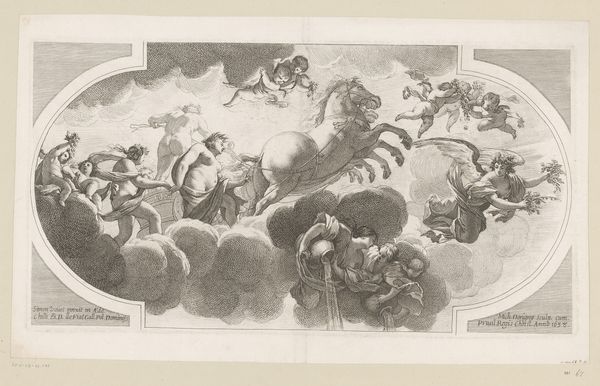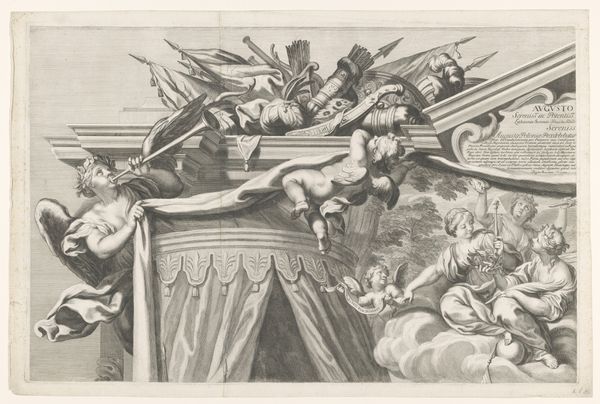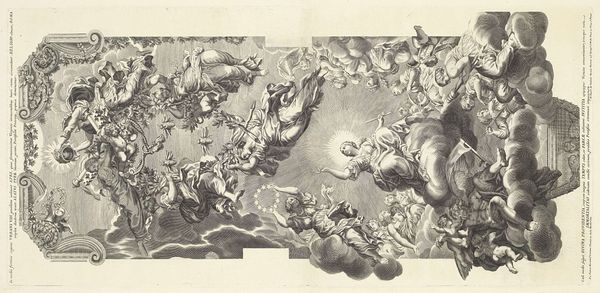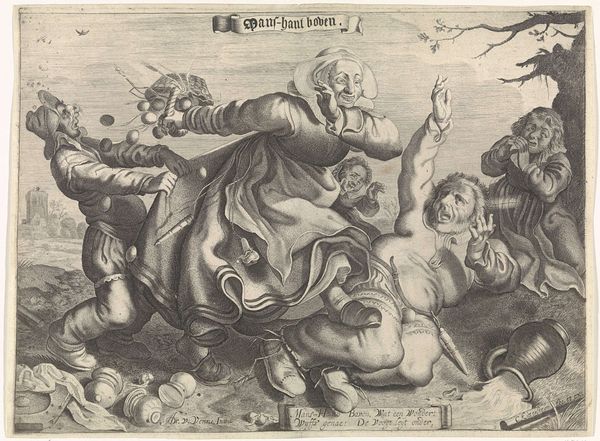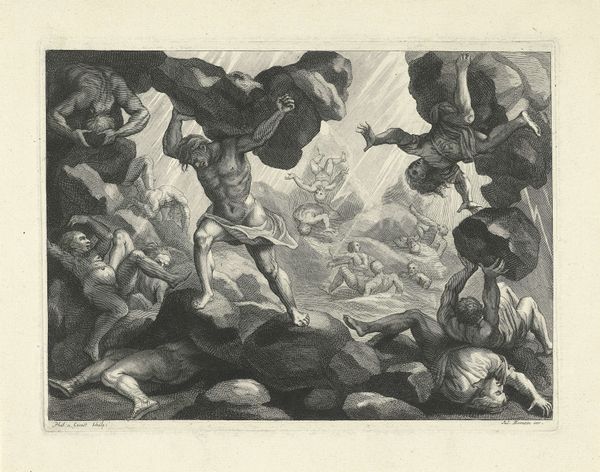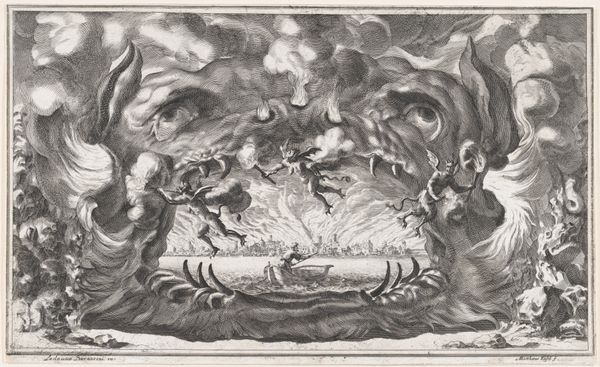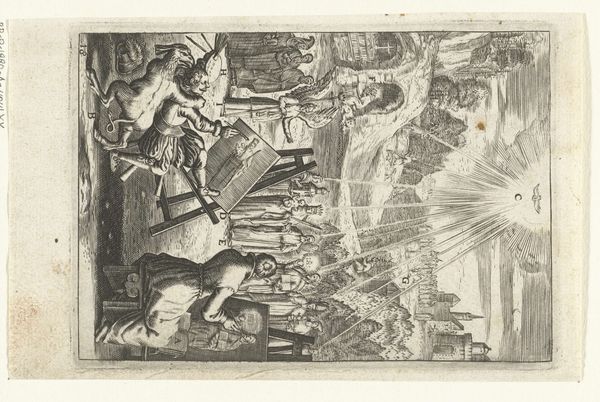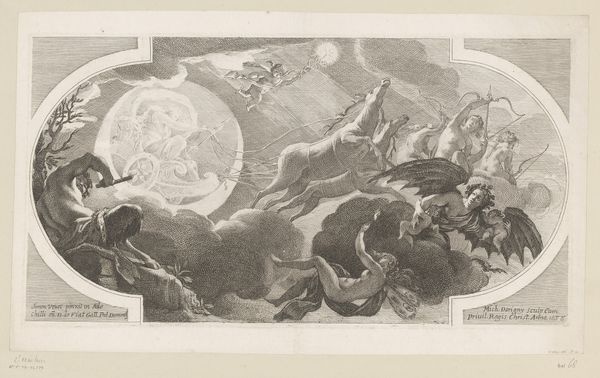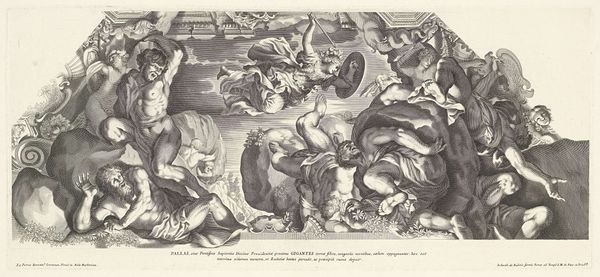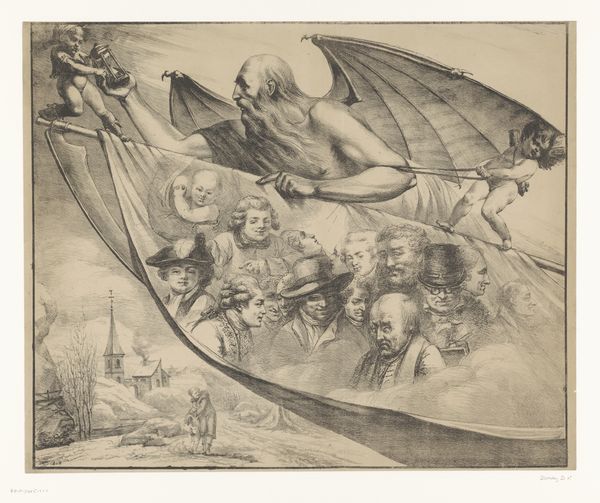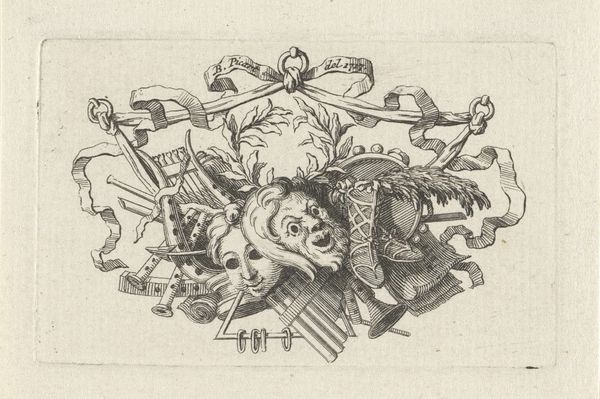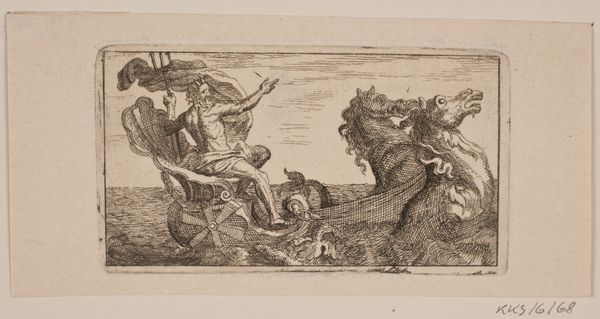
Promotieprent voor Joannes Baptista a Pfeiffersberg (blad voor rechtsboven) 1699
0:00
0:00
print, engraving
#
allegory
#
baroque
# print
#
old engraving style
#
line
#
history-painting
#
cartoon carciture
#
engraving
Dimensions: height 485 mm, width 732 mm
Copyright: Rijks Museum: Open Domain
Editor: This is a promotional print for Joannes Baptista a Pfeiffersberg, made by Arnold van Westerhout in 1699. The engraving features all sorts of allegorical figures – it feels very celebratory. How do you read all this imagery? Curator: I see layers of symbolic meaning carefully constructed to elevate Pfeiffersberg. Look at the crown and the coat-of-arms; it signifies earthly power sanctioned, perhaps, by divine right. But observe the cherubic figure contrasted with the militaristic emblems—do you see how earthly power is tempered by spiritual considerations? The artist positions Pfeiffersberg in a visual dialogue about legacy. Editor: I do, especially with Apollo on his chariot. I initially thought the piece was *only* about prestige, but maybe there’s also a claim to lasting fame? Curator: Precisely. Consider how Baroque art utilizes symbolism to connect its subjects to enduring virtues or narratives. It's not just about surface-level praise. What could this merging of classical mythology and religious imagery signify about Pfeiffersberg’s aspirations? Editor: It could mean he wanted to be seen as virtuous and divinely appointed… How much of this would the average person have picked up at the time? Curator: In Pfeiffersberg's circle, these iconographic references were probably well understood, contributing to a shared cultural narrative. Editor: Fascinating. I’m struck by how many layers of meaning are embedded in this image, and how they speak to both the individual and the broader culture. Curator: Yes, it reveals a complex dance between personal ambition and cultural memory, skillfully translated through a symbolic visual language.
Comments
No comments
Be the first to comment and join the conversation on the ultimate creative platform.
